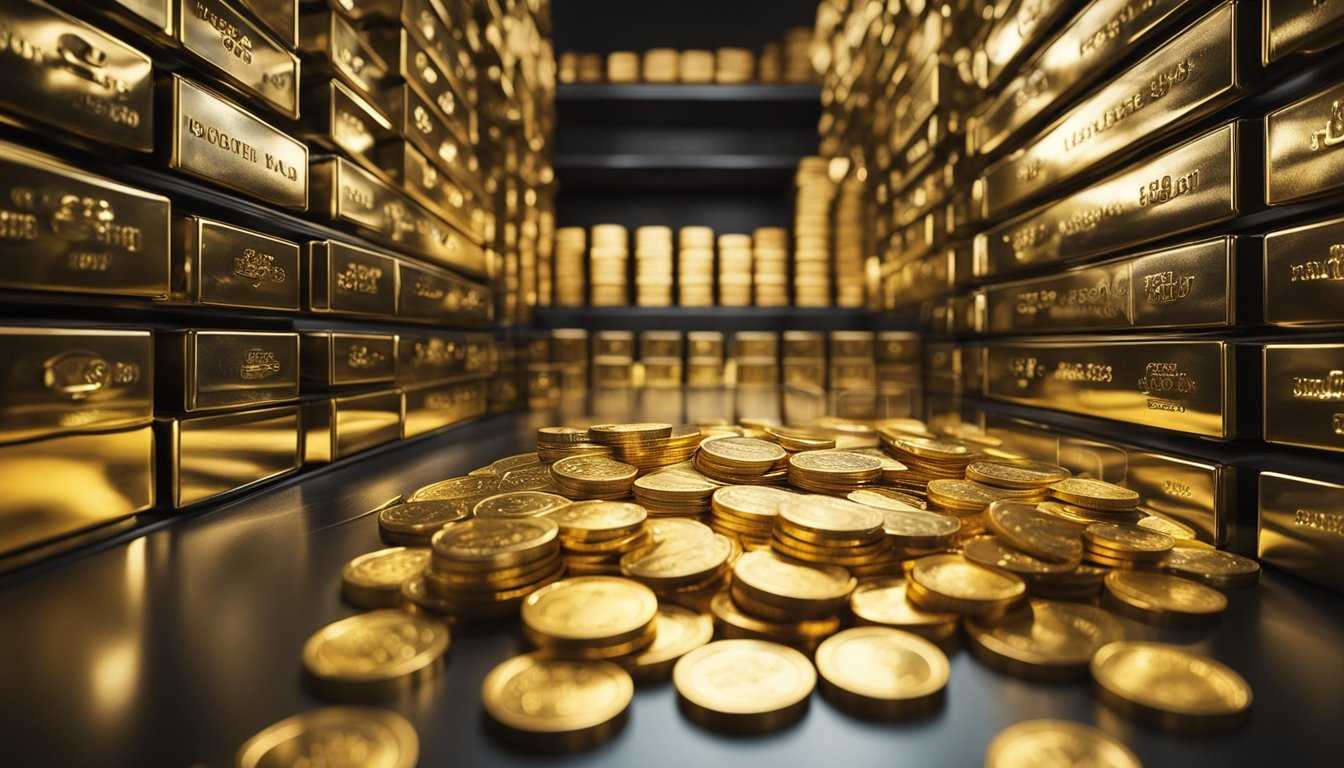Gold prices move for lots of reasons. Big deals, like when countries decide how much their money is worth or how many gold bars they want to keep, really shake things up. Also, if more people want to buy gold jewelry or electronics that need gold inside them, prices go up.
When there’s a lot of inflation—meaning stuff costs more in general—people run to buy gold as a safe choice.
Global economic stability
Global economic stability plays a big role in setting gold prices. Stable economies mean lower gold prices, while shaky economies push prices up. This is because investors see gold as a safe place for their money in tough times.
They move their cash to gold when they worry about the economy.
In uncertain times, people look to gold as a beacon of security.
Economic indicators like job reports and growth numbers give hints on this stability. When these indicators are weak, fear grows, and so does the love for gold among investors. Yet, during strong global growth periods, less attention goes to gold as confidence blooms in traditional investments like stocks and bonds.
Central banks’ monetary policies
Central banks play a big game with gold prices. They change interest rates and start or stop quantitative easing, which is when they buy more assets to pump money into the economy.
These moves make big waves in the value of gold. For example, when a central bank hikes up interest rates, people might sell their gold because they can get more money from savings or bonds.
But if there’s talk about inflation heating up, folks run back to gold as a safe place to keep their cash.
Quantitative easing has another trick—it often lowers the strength of currency. When that happens, it takes more dollars (or any other currency) to buy the same amount of gold, so the price of gold goes up in those countries.
It’s like watching a seesaw—the value of cash goes down on one side; on the other side, up goes the price of gold! Now let’s shift our focus and see how supply and demand also shake things up for gold markets.
Supply and demand dynamics
Shifting from central banks‘ actions, we now look at the push and pull of supply and demand. More people want gold? Prices go up. Too much gold with not enough buyers? Prices drop.
It’s that simple. The balance between how much gold is dug up (supply) and how many people or places want it (demand) sets the price.
Investment interest, jewelry love, and central bank purchases all make demand go up. If mines dig up a lot of gold, but there aren’t enough buyers, prices can fall. Also, when economies do well, people might buy less gold for safety and invest in things like stocks instead.
This can lower demand and affect prices too. So, keeping an eye on these factors helps traders make smart choices about buying or selling gold.
Inflation rates
Moving from how much gold people want and can get, let’s talk about rising prices, or inflation rates. Prices going up can make your money worth less over time. This is key when we think about gold.
You see, as costs go higher, folks look to gold as a way to keep their wealth safe. It’s like a shield against losing money because it usually keeps its value, even when everything else gets more expensive.
Here’s something to consider: “Inflation eats away at the buying power of our dollar, but gold stands firm.” When central banks print more money (which they do to help the economy during tough times), there’s more cash out there chasing after the same amount of goods and services.
This often leads to higher prices for nearly everything – except sometimes for gold. That’s why traders and investors watch inflation numbers closely; they tell us a lot about where gold might be headed next.
Gold’s Role as a Financial Safe Haven

Gold shines as a safe place for money when things get rough in the financial world. It’s like having an umbrella when the stock market rains. So, why not read more and see how gold can guard your cash?
Hedge against inflation
Gold acts like a shield against inflation. It keeps its value even when money buys less. This makes it a go-to for investors in rough times. They see gold as a safe place to put their money because it stands strong when currencies fall.
Inflation can eat up the value of cash, but not gold’s shine.
Experts agree, keeping an eye on gold rates helps with smart investment moves during high inflation. Gold draws folks who worry about the economy’s ups and downs. They trust in its power to protect wealth from inflation‘s bite.
This trust turns gold into a safe haven asset people run to for safety.
Performance during market volatility
Moving from how gold acts as a shield against rising prices, let’s talk about its dance during shaky market times. Gold shines brightest when stocks and bonds take a hit. This is because folks look for safe places to keep their money, and gold has been this kind of shelter for ages.
In the face of fear, gold stands firm.
Market updates often show us that when numbers on Wall Street go down, gold’s value tends to climb up. This isn’t just by chance. It’s because traders and investors see it as a solid rock in a stormy sea of market swings and surprises.
Expert insights tell us that adding some golden sparkles to your investment mix can actually protect your cash from wild market moves.
Impact of geopolitical risks
Geopolitical risks make gold shine as a safe asset. Think about it: when there’s trouble in the world, like tensions between countries or economic uncertainty, investors rush to buy gold.
This push and pull affect gold rates big time. For example, if there’s news about global tensions, you’ll see gold prices jump up as everyone looks for a secure place to put their money.
Understanding this link helps traders and investors make smarter choices. They watch the news closely and act fast to either grab some gold or sell what they have, depending on how stable the world feels at the moment.
It’s all about staying ahead of market volatility by keeping an eye on those geopolitical signals that show us where gold might head next.
Relationship Between Gold Rates and Currency Values
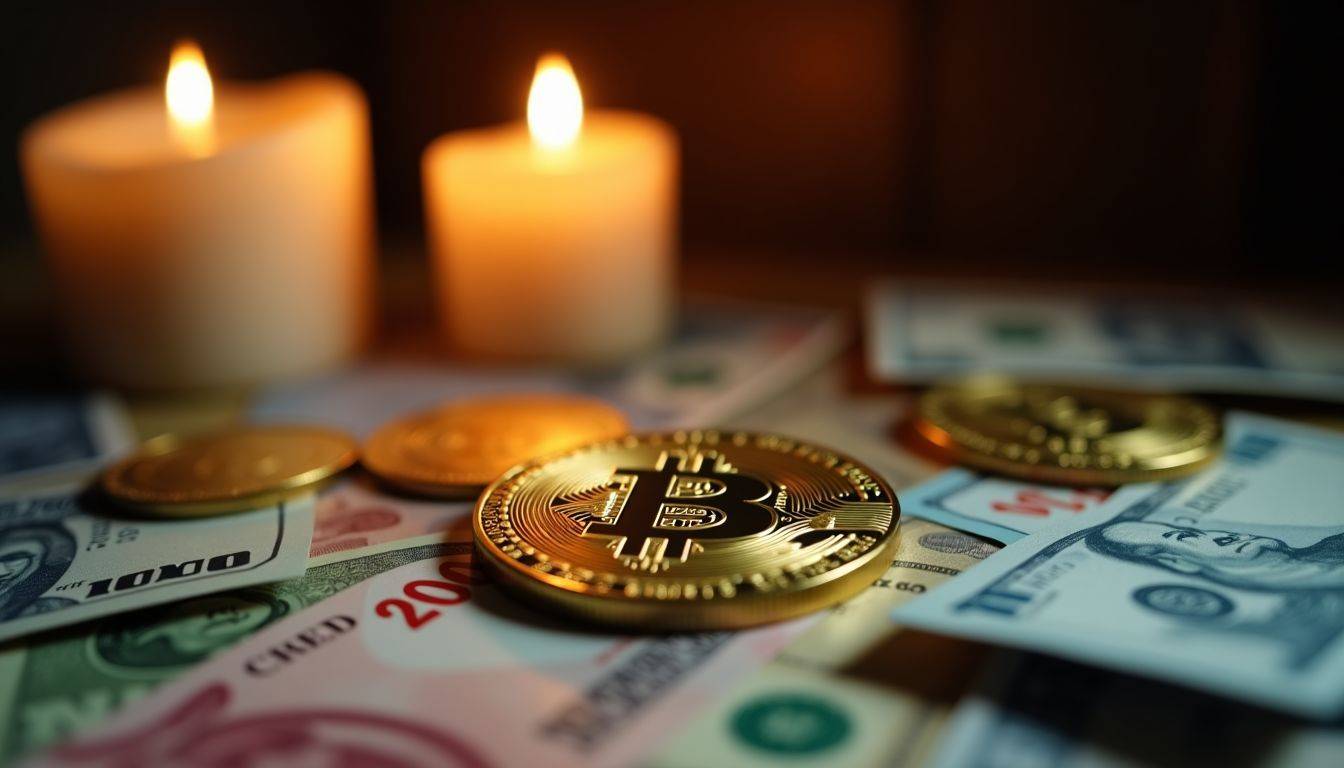
Gold prices and the value of money, like dollars, often move in opposite directions. When the greenback weakens, you might see gold prices go up as investors search for a safe spot to keep their wealth.
Inverse relationship with the U.S. dollar
The value of gold and the U.S. dollar move in opposite directions. If the dollar gets weaker, you see, gold prices go up. On the flip side, if the dollar strengthens, we notice a drop in gold prices.
This dance between them is like a see-saw on the playground; when one goes up, the other must come down. It’s all about balance. Traders keep an eye on this relationship to make smart moves in the market.
Investors run to gold during times when they think the dollar will lose its punch. They call it a “safe haven.” It’s like keeping your money under a mattress that gets fluffier as things get rougher outside.
Gold shines brightest when confidence in government paper declines.
Comparisons with other major currencies
Alright, we’re analyzing how gold rates compare to other major currencies. It’s a global competition, with each player’s actions being significant.
| Currency | Impact on Gold Rates |
|---|---|
| U.S. Dollar (USD) | Gold prices usually decrease when the dollar strengthens. Their relationship is inversely correlated. |
| Euro (EUR) | A stronger Euro often leads to higher gold prices. They tend to move together harmoniously. |
| Japanese Yen (JPY) | The correlation here is complex. Sometimes gold and the yen both perform well when there are global economic concerns. |
| British Pound (GBP) | Gold’s appeal may decrease in the UK when the pound is strong. The outcome can be unpredictable. |
So, by examining this table, it becomes clear it’s a matter of balance. If currencies rise, gold might fall, and the reverse is also true. Regular market updates are essential. They enable investors to monitor these fluctuations. Plus, understanding these dynamics assists in strategic gold trading decisions.
Specialists monitor gold’s performance closely against these currencies. It’s critical for forecasting market directions. These relationships are vital for those aiming to profit from gold investments. Keeping informed about these interactions and market events could lead to profitable ventures.
Effects of Interest Rates on Gold Investment
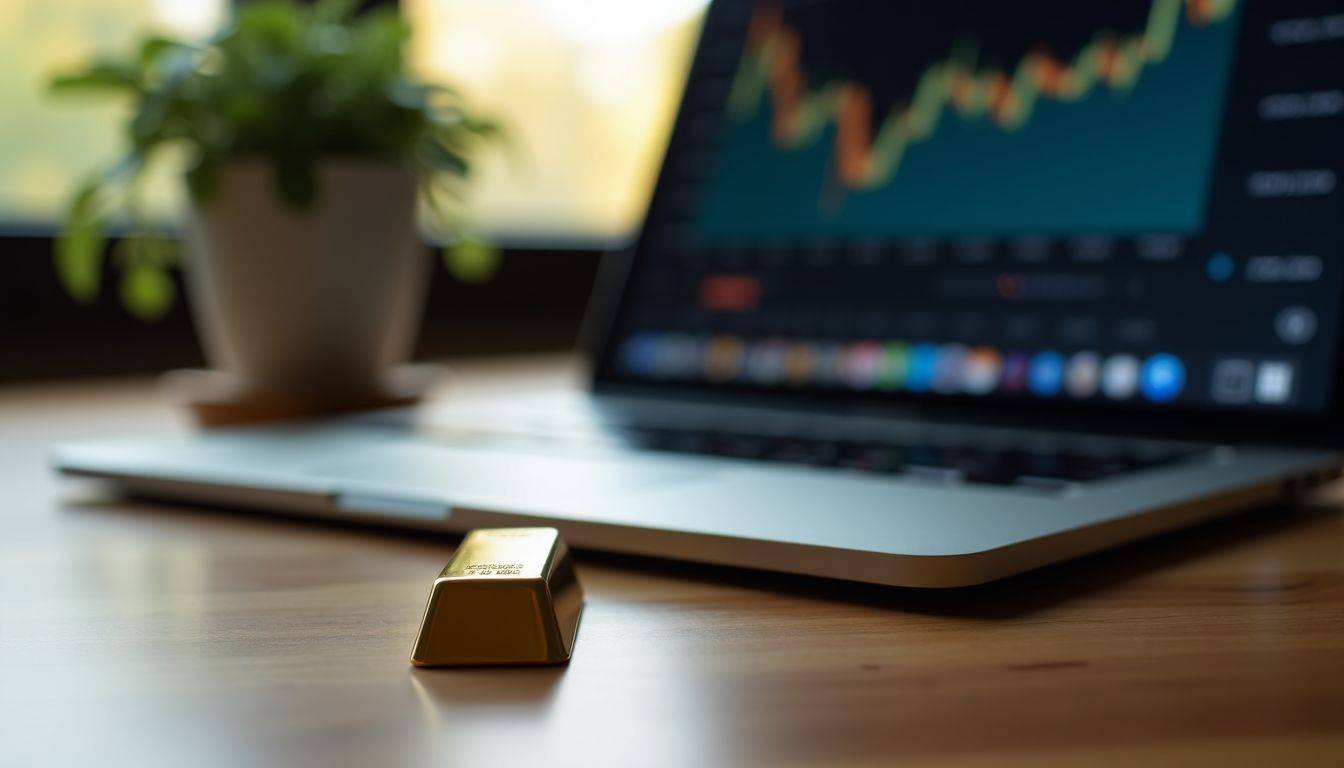
When the Federal Reserve hikes rates, gold often becomes less attractive. Why? Because people can get better returns from bonds or savings accounts.
Federal Reserve rate changes really shake things up for gold rates and your wallet. Think of the Federal Reserve as a big finance boss. When they hike up rates, suddenly, people find bonds more appealing because these pay out more over time.
Gold doesn’t do that; it just sits there looking shiny. So, folks start selling their gold to chase those better bond payouts, which pushes gold prices down.
On the flip side, if the Federal Reserve cuts rates down low, bonds don’t look so hot anymore. They’re not paying much back to investors. Then everyone starts eyeing gold again since it seems like a safer bet against inflation or shaky market times.
That’s when you see gold prices jump up because everyone wants a piece of it again. Following what the Federal Reserve does can give traders and investors good hints on when to buy or sell their golden stash.
Yield on fixed-income investments
Interest rates have a big say in how much you earn from fixed-income securities, like bonds and treasury notes. Think of these earnings as the yield. When interest rates go up, bond prices usually fall, and this makes new bonds more appealing because they offer higher yields.
But if you already own a bond, its value goes down. It’s a bit like a seesaw.
Central banks change interest rates to control money flow in the economy. These changes affect your returns on government and corporate bonds. Say the central bank hikes rates; your existing bond now looks less attractive compared to new ones with juicier yields.
This balance between old and new is crucial for traders and investors to watch.
Now let’s shift gears to gold prices…
Gold Prices and Stock Market Performance

Gold prices and the stock market often move in opposite directions. When stocks are down, gold usually goes up as investors look for safer places to put their money.
Correlation with global stock markets
Gold prices and the stock market often move in different directions. If stocks go down, gold usually goes up. This tells us how people feel about the market. When they’re worried, they buy more gold.
It’s a way to keep their money safe. This dance between gold and stocks creates chances for traders. By watching both, they can make smarter choices about when to buy or sell.
Next, let’s talk about how mining companies and ETFs react to changes in gold prices.
Influence on mining stocks and ETFs
Moving from how gold prices link with global stock markets, we see a direct impact on mining stocks and ETFs. Gold rates jump up or down, and so do these investments. Mining companies’ values go hand in hand with the price of gold.
If gold is expensive, the company that digs it out becomes more valuable. This makes sense, right? People who buy stocks in mining firms pay close attention to daily changes in gold prices.
ETFs that focus on precious metals also feel this effect deeply. These funds hold a mix of things like mining stocks and actual gold. So, when gold rates shift, the value of these ETFs does too.
Traders keep an eye on market updates every day for hints on how to act next with their money linked to these assets. Short sentences make this easy to understand: higher gold prices can mean good news for both mining stocks and metal-focused ETFs.
Strategic Considerations for Investors
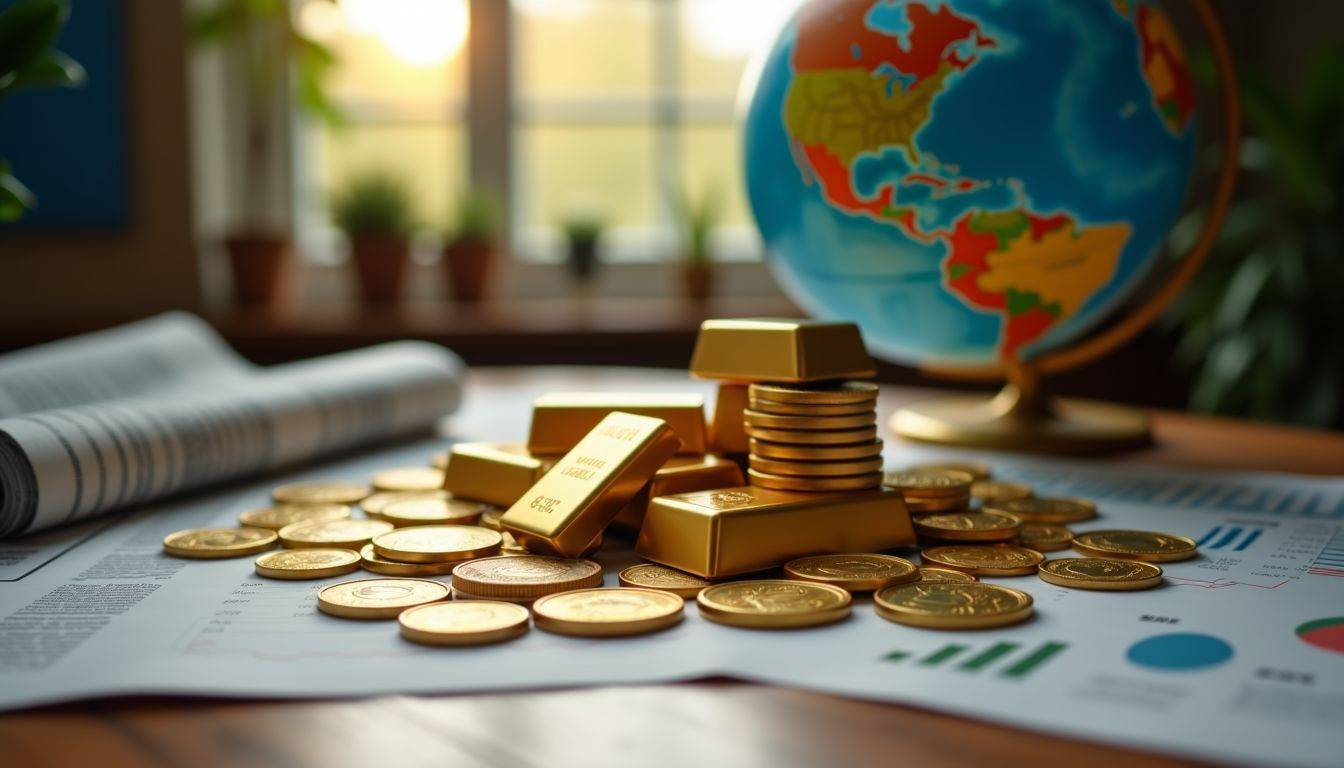
Thinking about gold? Smart move. It’s not just shiny; it can brighten up your portfolio too. Before you jump in, know this: mixing gold into your investment mix can guard against big market swings and add some sparkle during dull economic times.
Gold acts like a financial anchor, so when stocks plunge or the dollar dances, gold often stays steady or even climbs. This makes it a top pick for those looking to spread their risks around and not put all their eggs in one basket—like having both an umbrella and sunscreen on hand because you never know if it’ll rain or shine.
Second tip—I bet you’ve heard timing is everything? Well, that’s super true for buying and selling gold. Watching global events closely can give clues on when to make your move—think of it as trying to catch the best wave while surfing.
You’ll want to stay updated with major currency shifts (especially with the U.S dollar), inflation whispers, and what central banks are up to with their interest.
Diversification benefits
Adding gold to your mix of investments can make things less risky. Think about it like not putting all your eggs in one basket. If one type of investment goes bad, you’ve got others that might do well.
Gold often moves differently from stocks and bonds. So, when the stock market dips, gold might rise or stay stable. This helps keep your overall money safer.
Expert tips and daily updates on the market make a big difference too. They help you decide how much gold to have in your mix at any time. Having this strategy means you’re ready to adjust as things change in the financial world.
This way, you aim for better returns without taking on too much risk.
Timing for buying and selling gold
Changes in gold values can be beneficial or detrimental to your investments.
- Observe the flux in market trends. Costs rise and fall. Take advantage of optimal opportunities.
- Global news events have an impact on prices. Maintain awareness of significant international events.
- The power of the dollar is highly significant. Greater gold prices usually accompany a weakened dollar.
- Central banks also participate in the gold trade. Their transactions can provide favorable occasions to make a move.
- Inflation increases the attractiveness of gold. It’s beneficial to purchase when inflation begins to ascend.
- Interest rates play a part as well. Lower rates frequently encourage people to invest in gold.
- Assess the financial market’s condition. Dire situations in the market often indicate favorable circumstances for gold.
- Contemplate how the supply and demand in mining regions affect availability.
- Seasonal changes can affect gold too! Increased demand is often seen during the wedding season in certain countries.
- Lastly, establish objectives for your investment returns prior to selling.
These steps offer a pathway to profit through timely gold purchases and sales.
Maximizing Your Financial Growth through Gold Investments
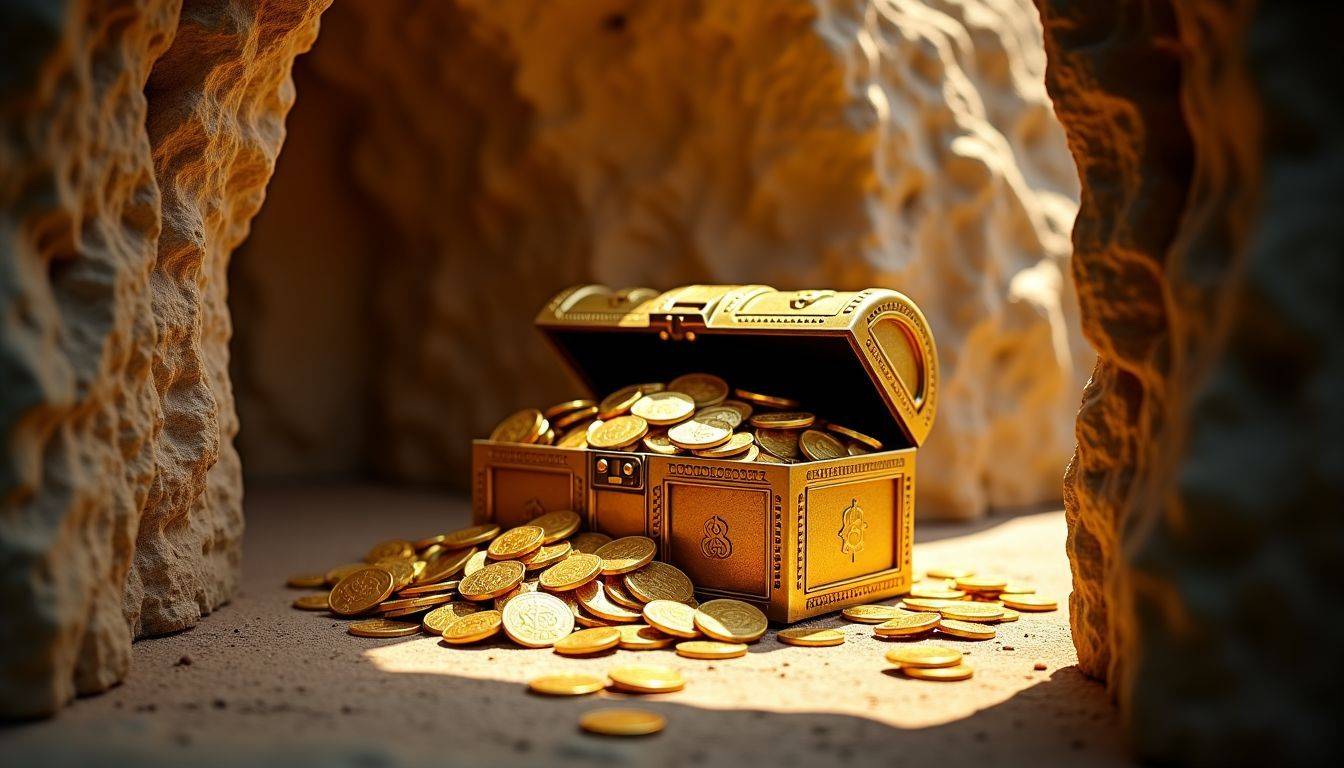
Gold investments can really boost your financial growth. Experts say keeping an eye on gold rates is key. Daily updates from market analysts help you catch the best times to buy or sell.
Gold shines during tough market times. It’s a safe pick that helps balance your investment mix.
Using tips and news from pros makes it easier to understand how gold moves in the markets. Adding gold to where you put your money can smooth out bumps when other investments dip. This strategy means you might do better, even when things look shaky everywhere else.
Conclusion

So, we’ve talked a lot about gold and how it shakes hands with the economy. This shiny metal has its fingers in many pies—from stocks to dollars, it makes waves. Keeping an eye on gold can make your money work smarter, not harder.
It’s like having a secret map where X marks the spot of smart investing. So go ahead, use what you’ve learned; it might just be your golden ticket!
FAQs
1. What’s the big deal about gold rates and financial markets?
Gold rates, my friend, are like a thermometer for the health of our financial markets. When they go up or down, it can signal major shifts in economic trends.
2. Can changes in gold prices really impact my investments?
You bet! Changes in gold prices can affect everything from stocks to bonds – even real estate values! So keeping an eye on those shiny nuggets is crucial if you’re playing the investment game.
3. How does understanding gold rates help me with investing?
Well, by having a handle on how gold rates move, you get insights into market trends…and that’s golden info (pun intended) when making investment decisions!
4. Are there any tools or resources to help me track these golden numbers?
Absolutely! There are plenty of online platforms and apps out there that keep tabs on global gold rates…just a few clicks and you’re all set to stay informed!





